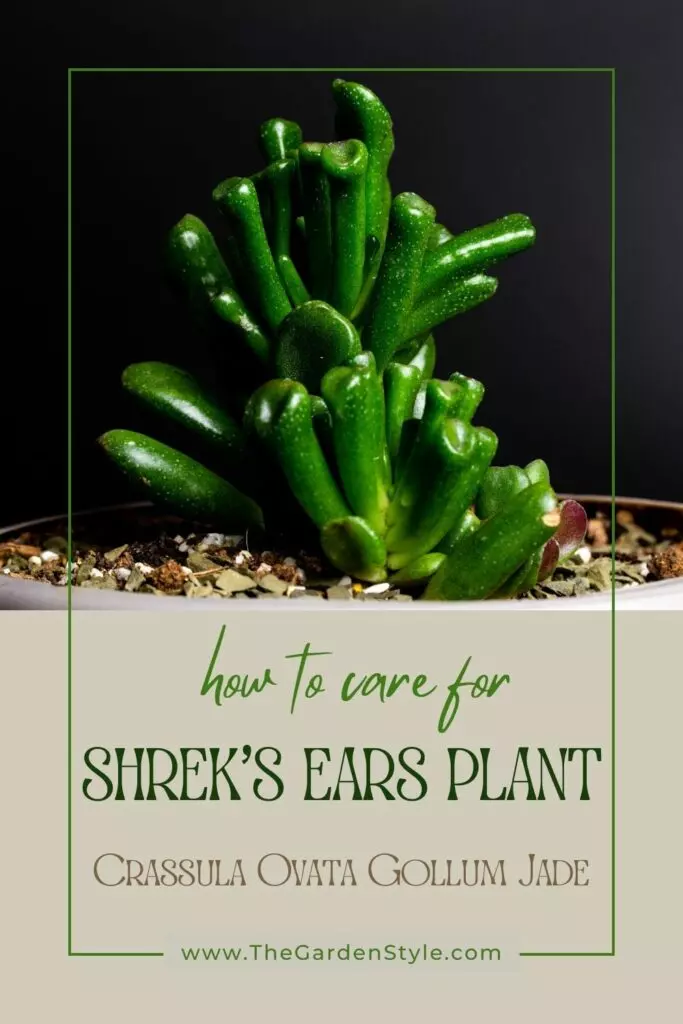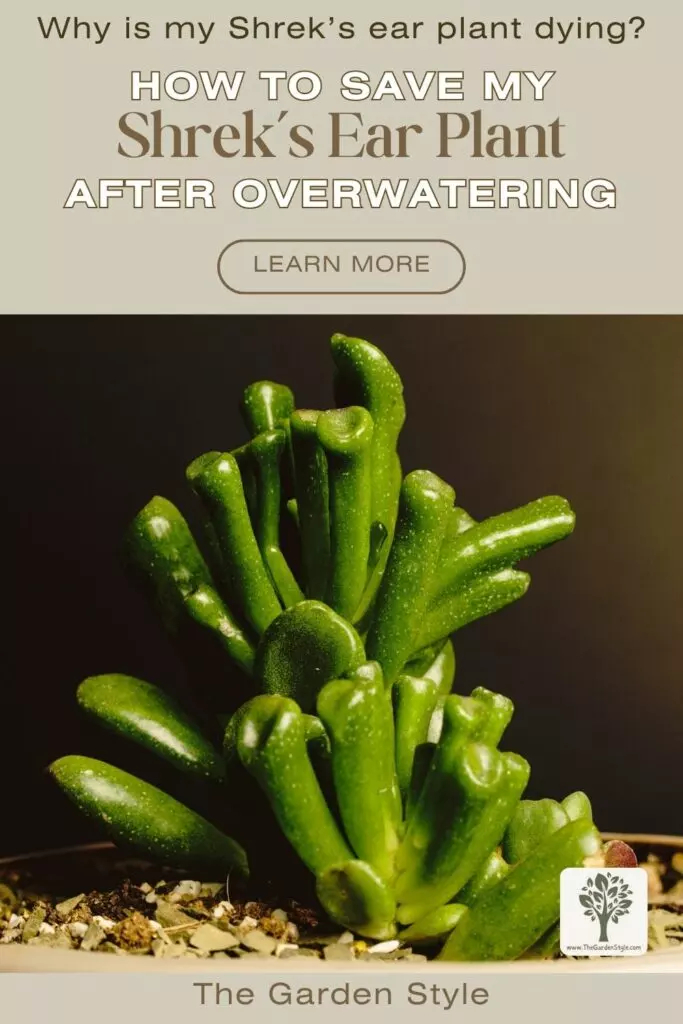Explore the unique charm of Crassula ovata ‘Gollum,’ affectionately dubbed ‘Shrek’s Ears.’ Wondering why? Keep reading to uncover the delightful story behind this curious nickname!
Table of Contents
Characteristics of Crassula Ovata Gollum
Crassula ovata gollum, also known as “Shrek’s ears” or Shrek Ear succulent, is a plant native to South Africa.
Shrek Ear succulent is a very compact shrubby plant with thick stems. In its habitat, Shrek Ear succulent can grow up to 35” (90 cm) tall and about 24” (60 cm) wide.
Its peculiar tubular leaves have a slight reddish tinge at the ends, which gives it a curious appearance. These curious leaves are the ones that give it the nickname of “Shrek’s ears” because it resembles this animation character.
Experts do not agree on whether this plant is a hybrid of Crassula Ovata or a cross between Crassula Argentea and Crassula Lactea.
Want to read more about Crassula plants? Crassula Red Pagoda, Crassula Campfire, Crassula tetragona, etc.
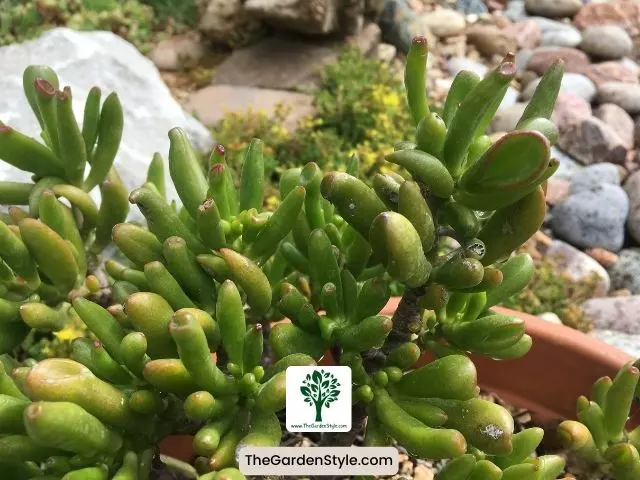
The Flower of Shrek’s ears
In winter, the Shrek Ear succulent produces flowers reminiscent of those found in its botanical relatives. These blossoms feature five white petals with delicate pink hues at their tips.
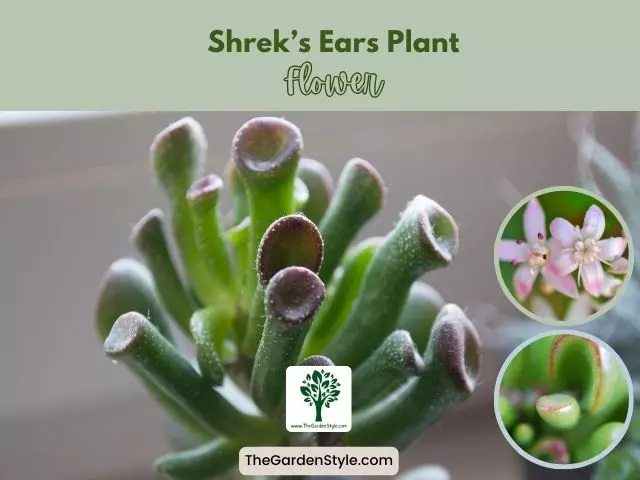
Crassula Ovata Gollum Care
Like the rest of the family, Crassula ovata gollum has simple care.
It is important to create a well-drained substrate with little organic matter. A special substrate for succulents combined with gravel is perfect.
Like the rest of the Crassula family, the Shrek Ear succulent withstands dry and hot climates well, even short frosts in the coldest seasons.
However, Shrek Ear succulent must have a dry environment during the winter, as humidity can cause it to rot quickly.
In essence, by considering these care tips, your Shrek Ear succulent will thrive under optimal conditions:
Shrek Ear Succulent Watering
Light watering without puddling. The substrate should always be completely dry before watering again. As with all succulents, we must not overwater, or it could seriously affect the plant, causing death.
If you want to know more about how to properly water your Shrek Ears succulents, we recommend our article about How to Take Care of Succulents.
Shrek Ears Plant Humidity
Excessive humidity rots the plant, especially in cold seasons. To avoid excess moisture in our Shrek Ear succulent, we must make sure that we do not overwater and that the soil has good drainage.
Recommended reading: Black Spots on Succulents
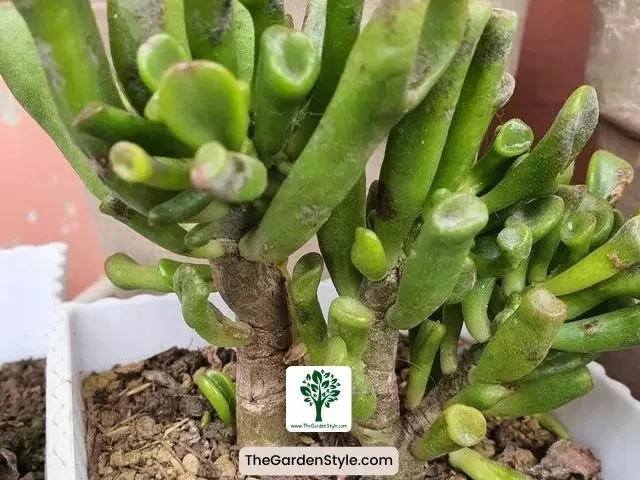
Shrek Ears Succulent Light
Direct sunlight at least 4/6 hours a day. Place it in a well-lit window to maximize exposure to available daylight hours.
How to Propagate Shrek Ear Succulent
Propagation of the Shrek Ear succulent (Crassula ovata ‘Gollum’) is straightforward and can be achieved through stem or leaf cuttings.
If you are going to propagate your Shrek Ear succulent at home, it is advisable to take the stem or leaf cutting using a sharp knife to cut flush.
Afterward, let the cuttings dry for a few days so that a callus forms at the cutting site. This prevents it from absorbing too much water and rotting.
Prepare the recommended substrate and place the cutting so that it touches the substrate without burying it. To do this, you can support the cutting on the side of the pot or help yourself with a pebble.
Once planted, water lightly without puddling, and always make sure that the substrate is dry before watering again.
The Shrek Ear succulent (Crassula ovata gollum) is a fast-growing plant, so in a few weeks, we will start to see how our specimen reproduces.
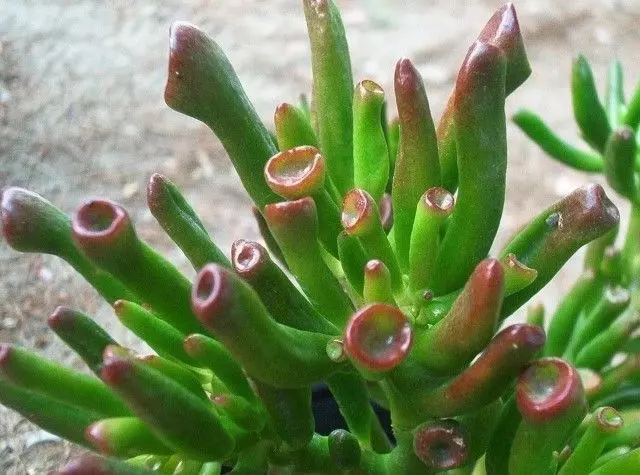
Crassula Ovata Gollum Bonsai
All varieties of this family are popular among bonsai lovers, and this succulent is no exception.
Shrek Ear succulents are especially recommended for beginners starting in the bonsai world because of their easy care.
No products found.
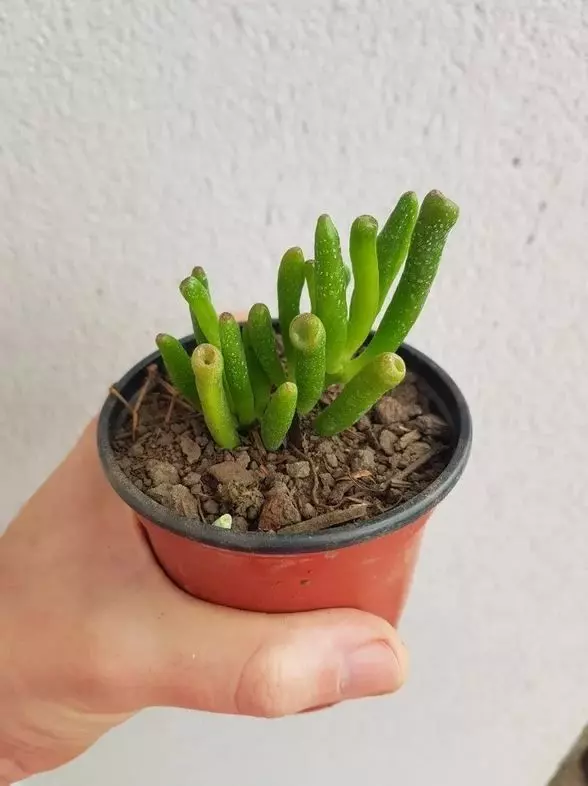
Synonyms and Common Name
The etymology of the name has three parts:
- Crassula: from Latin “Crassus” meaning “thick”.
- Ovata: from Latin “ōvātus“, “egg-shaped oval”.
- Gollum: In honor of the character from the saga “The Lord of the Rings”.
- Also, this plant is known by several synonyms and common names:
- Gollum jade, Shrek Ear succulent or Shrek’s Ears plant.
Why Is My Shrek’s Ear Plant Dying?
Several factors could contribute to a Shrek’s Ear (Crassula ovata ‘Gollum’) plant showing signs of decline or distress. Here are common reasons why your Shrek’s Ear plant may be dying:
- Overwatering: Excessive moisture can lead to root rot, causing the plant to wilt and decline.
- Poor Drainage: Shrek’s Ear succulents require well-draining soil. Inadequate drainage can contribute to root issues.
- Insufficient Light: These succulents thrive in bright, indirect sunlight. Insufficient light can lead to the plant developing a stretched and weakened appearance.
- Pests: Check for signs of pests like mealybugs or aphids, which can damage the plant and weaken its overall health.
- Disease: Fungal or bacterial infections can harm the plant. Promote adequate air circulation and refrain from excessive watering to mitigate these concerns.
- Temperature Extremes: Shrek’s Ear is sensitive to extremely low temperatures. Frost or very cold conditions can cause damage.
To revive a struggling Shrek’s Ear plant, assess and address these potential issues. Adjust watering practices, ensure proper drainage, provide adequate light, and inspect for pests or diseases. The subsequent paragraph will provide instructions on reviving a Shrek’s Ear plant following overwatering.
How to Save My Shrek Ear Plant After Overwatering
Like many other succulent plants, the Shrek’s ears plant is very susceptible to overwatering. To save your Shrek Ear Plant after overwatering, follow these steps:
- Remove Excess Water: If the soil is waterlogged, carefully remove the plant from its pot and let the excess water drain away. Gently shake the roots to remove as much waterlogged soil as possible.
- Inspect the Roots: Examine the roots for signs of rot. Trim away any mushy or blackened roots using clean and sharp scissors or pruning shears. Healthy roots are firm and white. Disinfect your cutting tools between cuts to prevent the spread of disease.
- Allow the Soil to Dry: Let the plant sit out of its pot for a day or two to allow the remaining soil to dry out. Ensure the plant is in a well-ventilated area during this time.
- Repot in Well-Draining Soil: Repot the plant into a well-draining succulent or cactus mix. Ensure the new pot has drainage holes to prevent future overwatering issues. Don’t use a pot that is too large; choose a size that accommodates the root ball with some room to grow.
- Adjust Watering Routine: Succulent plants like the Gollum Jade prefer to dry out between waterings. Water the plant only when the top inch (2.5 cm) of the soil feels dry. Overwatering is a common issue with succulents, so be cautious and avoid keeping the soil consistently moist.
- Provide Adequate Light: Place the plant in a location with bright, indirect light. Gollum Jades thrive in sunlight, so ensure they receive enough light for healthy growth. However, protect them from intense, direct sunlight, especially during the hottest part of the day.
- Monitor for Signs of Recovery: Keep a close eye on your plant for signs of recovery. Healthy new growth is a positive indicator. If you notice any remaining issues or signs of stress, adjust your care routine accordingly.
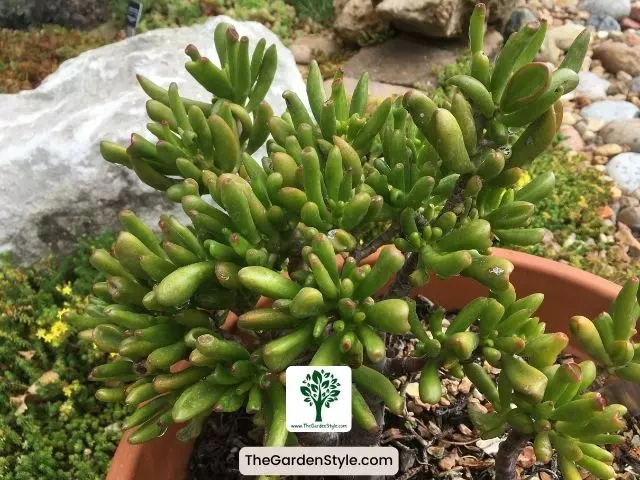
If this post about Crassula ovata Gollum (Shrek’s Ear Plant) was helpful, please share it:
